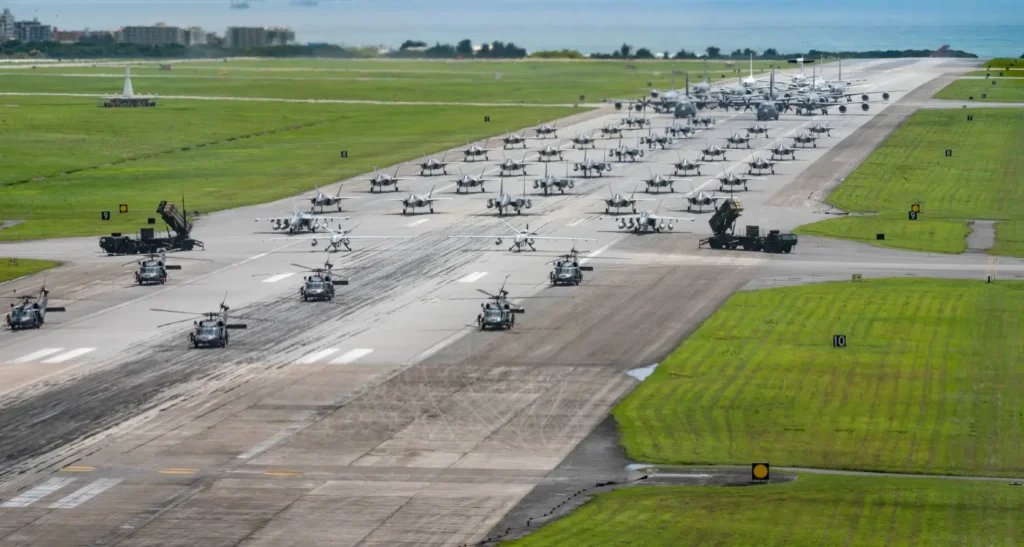In a remarkable display of airpower and joint-force coordination, Kadena Air Base in Japan hosted what may be the largest “elephant walk” ever seen, featuring an impressive lineup of 53 aircraft and a pair of Army Patriot missile launchers.
The event showcased a broad spectrum of U.S. military capabilities and sent a clear message of deterrence and readiness in the Indo-Pacific region.
The formation included a diverse mix of platforms from the U.S. Air Force, Navy, and Army.
Dennis Quaid’s #1 Warning for Americans
Air Force aircraft made up the bulk of the lineup, including 24 F-35A Lightning II fighters, eight F-15E Strike Eagles, six HH-60 Pave Hawk rescue helicopters, two MQ-9 Reaper drones, two MC-130J Commando II tankers, six KC-135 Stratotankers, an RC-135 Rivet Joint reconnaissance aircraft, and an E-3G Sentry AWACS platform.

The Navy contributed two EA-18G Growler electronic warfare jets and a P-8 Poseidon maritime patrol aircraft, while the Army flanked the show of force with two Patriot surface-to-air missile systems.
This 53-aircraft march down the Kadena flight line surpassed the previous record of 52 aircraft set at Hill Air Force Base in Utah in 2020.
Yet it wasn’t just the number that drew attention—it was the incredible variety of airframes involved, representing everything from special operations to electronic warfare, aerial refueling, intelligence gathering, and search and rescue.
“An elephant walk like this sends a message you can’t ignore—it shows our Airmen, allies, and adversaries that we’re united, capable, and ready,” said 18th Wing command chief master sergeant Brandon Wolfgang in an official release.
“This kind of teamwork and presence is exactly how we maintain deterrence in the Indo-Pacific.”
Most of the aircraft in the formation are based at Kadena or operate there regularly, such as the HH-60s, KC-135s, and the E-3G.
Though Kadena is home to several F-15 squadrons, the F-15Es featured in the walk were from Seymour Johnson Air Force Base in North Carolina.

Notably, the elephant walk also highlighted the logistical muscle behind such an operation.
Six KC-135s supported the refueling needs of numerous aircraft, while the MC-130Js—designed for refueling helicopters—ensured the HH-60s and Navy Growlers could maintain flight endurance using the drogue system.
The RC-135 Rivet Joint and P-8 Poseidon, both electronic reconnaissance platforms, added another layer of capability.
Packed with sophisticated listening equipment, these aircraft can intercept a wide range of electromagnetic signals, from radios to cell phones.
The P-8 also plays a direct role in anti-submarine warfare.
Rivet Joints, based at Offutt Air Force Base in Nebraska, have recently been spotted on missions off the coast of Mexico, reportedly monitoring cartel activity.
This display marks a significant escalation from last year’s similar but smaller 33-aircraft elephant walk at Kadena.
It reflects a growing emphasis on joint readiness and force projection in a region increasingly defined by strategic competition.
With its scale, coordination, and symbolic impact, Kadena’s 53-aircraft elephant walk stands as a vivid reminder of American military reach and the unity of allied forces in the Pacific theater.
Join the Discussion
COMMENTS POLICY: We have no tolerance for messages of violence, racism, vulgarity, obscenity or other such discourteous behavior. Thank you for contributing to a respectful and useful online dialogue.